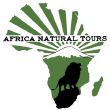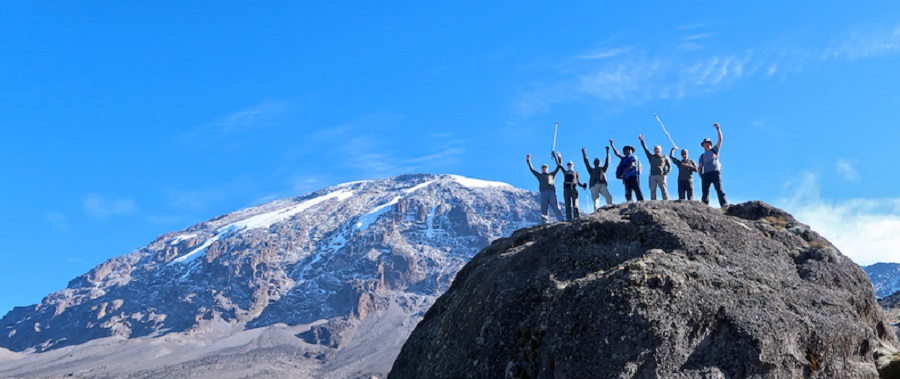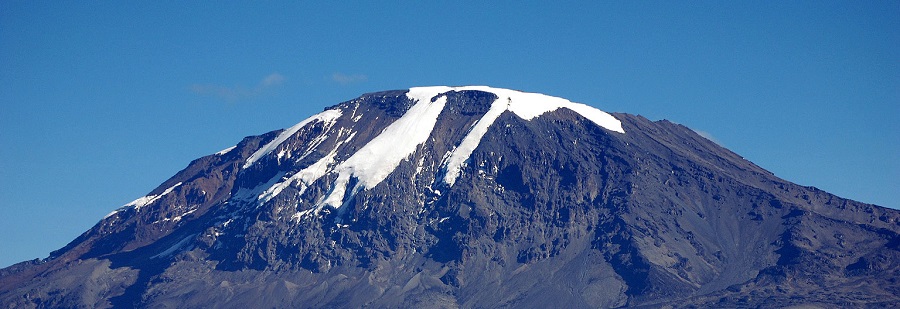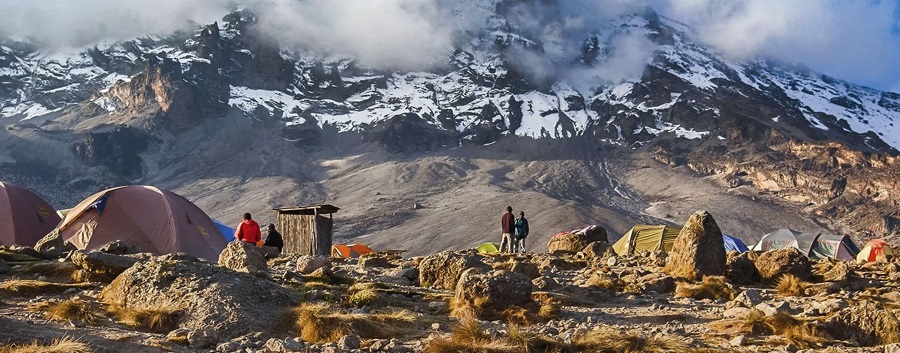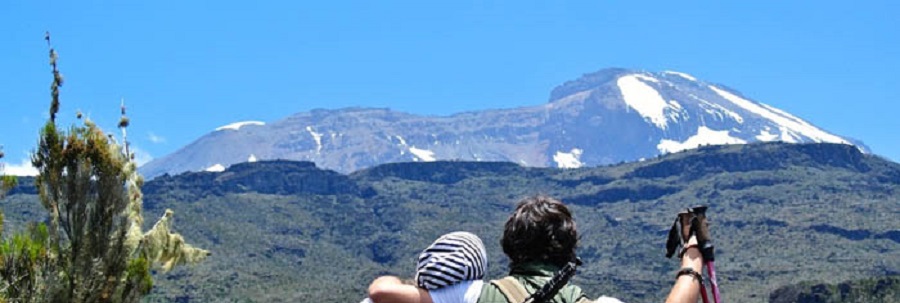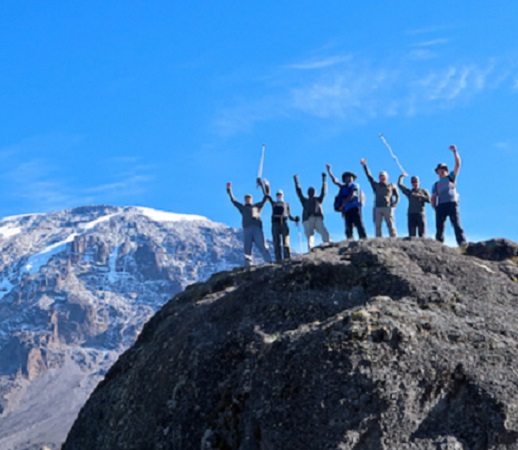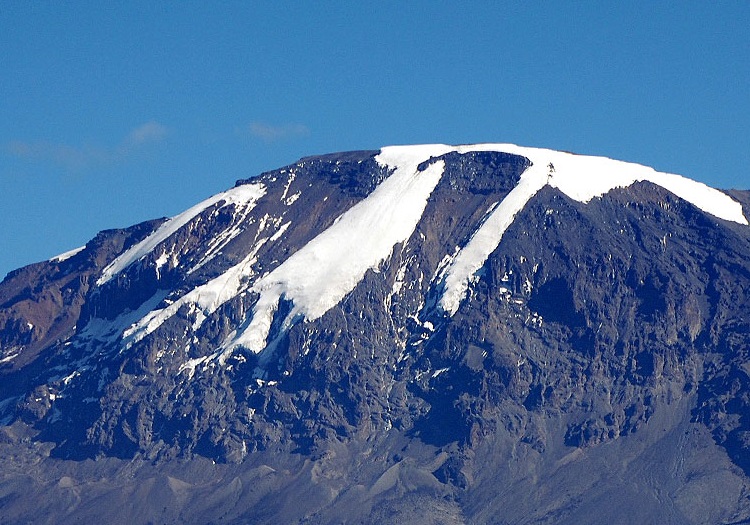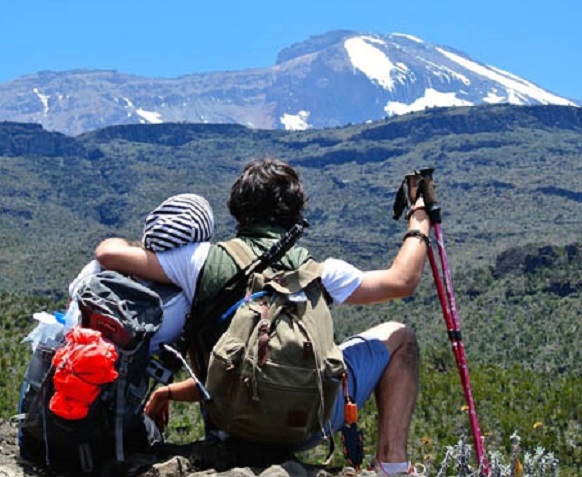Mountain Gears
Mountain bike gears refer to the components on a mountain bike that allow riders to adjust the gear ratio between the front chainring and rear cog, enabling them to control how easy or hard it is to pedal. These gears play a crucial role in determining the cadence (pedal speed) and efficiency of pedaling, helping riders navigate different terrains by selecting the appropriate gear for the trail’s steepness and their desired effort level. Modern mountain bikes commonly feature 1x drivetrains with a single front chainring and a wide-range rear cassette, controlled by a rear derailleur actuated by a shifter. Riders can optimize their gear selection based on factors like trail gradient, desired cadence, and power output to enhance performance and efficiency while riding.
Bottled Oxygen
We carry bottled oxygen on all of our climbs as a precaution and additional safety measure. The oxygen cannister is for use only in emergency situations. It is NOT used to assist clients who have not adequately acclimatized on their own to climb higher. The most immediate treatment for moderate and serious altitude sickness is descent. With Kilimanjaro routes, it is always possible to descend, and descend quickly. Therefore, oxygen is used strictly to treat a stricken climber, when necessary, in conjunction with descent, to treat those with moderate and severe altitude sickness.
We are aware that some operators market the use of supplementary personal oxygen systems as a means to eliminate the symptoms of AMS. To administer oxygen in this manner and for this purpose is dangerous because it is a temporary treatment of altitude sickness. Upon the cessation of the use of oxygen, the client will be at an even higher altitude without proper acclimatization.
99% of the companies on Kilimanjaro do NOT offer supplementary oxygen - because it is potentially dangerous, wholly unnecessary and against the spirit of climbing Kilimanjaro. The challenge of the mountain lies within the fact that the summit is at a high elevation, where climbers must adapt to lower oxygen levels at altitude. Using supplementary oxygen is akin to putting the mountain at sea level, where nearly everyone can summit (see should I use Supplemental Oxygen on Kilimanjaro?).
Gamow Bag
The Gamow Bag is portable hyperbaric chamber used to treat AMS. The inflatable bag simulates descent to lower altitude. The patient is placed inside the bag and it is inflated with air to increase the concentration of oxygen. A Gamow bag weighs about 12 lbs. Inflated; the bag is about 7 feet long and 2 feet in diameter.
At 9,800 feet (3,000 m), the Gamow Bag can simulate a descent of 4,800 feet (1,500 m). After two hours in the bag, the person's body chemistry will have "reset" to the lower altitude. This acclimatization lasts for up to 12 hours outside of the bag which should be enough time to get them down to a lower altitude and allow for further acclimatization.
Our staff does not carry Gamow bags. Use of a Gamow bag on Mount Kilimanjaro is impractical because descent is the most immediate, accessible treatment.
Diamox and Ibuprofen
Diamox (generic name acetazolamide) is an F.D.A. approved drug for the prevention and treatment of AMS. The medication acidifies the blood, which causes an increase in respiration, thus accelerating acclimatization. Diamox does not disguise symptoms of altitude sickness, it prevents it. Studies have shown that Diamox at a dose of 250 mg every eight to twelve hours before and during rapid ascent to altitude results in fewer and/or less severe symptoms of acute mountain sickness (AMS). The medicine should be continued until you are below the altitude where symptoms became bothersome. Side effects of acetazolamide include tingling or numbness in the fingers, toes and face, taste alterations, excessive urination; and rarely, blurring of vision. These go away when the medicine is stopped. It is a personal choice of the climber whether or not to take Diamox as a preventative measure against AMS.
It is important that you be open, active and honest with your guide. If you do not feel well, do not try to pretend you are fine. Do not mask your symptoms and say you feel OK. Only with accurate information can your guide best treat you.
Of course, there is always the chance that you will have to abandon your climb. In these situations, the guide will tell you to descend. It is not a request, but an order. The guide's decision is final. Do not try to convince him with words, threats or money to continue your climb. The guide wants you to succeed on your climb, but will not jeopardize your health. Respect the decision of the guide.
Pulse Ox meter
Our guides will use a pulse ox meter to measure the oxygen level in your blood and your pulse rate in the morning and evening. The ox meter is placed on a climber's fingertip. The ox meter uses two beams of light that shine into small blood vessels and capillaries in your finger. The sensor reflects the amount of oxygen in the blood.
Oxygen saturation is a measurement of how much oxygen your blood is carrying as a percentage of the maximum it could carry. Normal blood oxygen levels at sea level are 95-100%.
As altitude increases, oxygen saturations decrease. Proper acclimatization generally brings oxygen saturations higher, which is why these figures typically rise when oxygen saturations are tested after resting overnight. On Kilimanjaro, oxygen saturations percentages are regularly in the 80's. However, if oxygen saturation is ever less than 80%, we monitor that climber very closely.
Proper Acclimatization Guidelines
The following are recommended to achieving acclimatization:
• Pre-acclimatize prior to your trip by using a high altitude training system.
• Ascend Slowly. Your guides will tell you, "Pole, pole" (slowly, slowly) throughout your climb. Because it takes time to acclimatize, your ascension should be slow. Taking rest days will help. Taking a day increases your chances of getting to the top by up to 30% and increases your chances of actually getting some enjoyment out of the experience by much more than that.
• Do not overexert yourself. Mild exercise may help altitude acclimatization, but strenuous activity may promote HAPE.
• Take slow deliberate deep breaths.
• Climb high, sleep low. Climb to a higher altitude during the day, and then sleep at a lower altitude at night. Most routes comply with this principle and additional acclimatization hikes can be incorporated into your itinerary.
• Eat enough food and drink enough water while on your climb. It is recommended that you drink from four to five liters of fluid per day. Also, eat a high calorie diet while at altitude, even if your appetite is diminished.
• Avoid tobacco, alcohol and other depressant drugs including, barbiturates, tranquillizers, sleeping pills and opiates. These further decrease the respiratory drive during sleep resulting in a worsening of altitude sickness.
• If you begin to show symptoms of moderate altitude sickness, don't go higher until symptoms decrease. If symptoms increase, descend.
Our guides are all experienced in identifying altitude sickness and dealing with the problems it causes with climbers. They will constantly monitor your well-being on the climb by watching you and speaking with you. Twice daily, our guides will conduct tests with a pulse ox meter to measure your oxygen saturation and pulse rate. Additionally, our guides will administer the Lake Louise Scoring System (LLSS) to help determine whether you have any symptoms of altitude sickness and the severity.
Guides
Our Kilimanjaro guides are very experienced, with most having climbed well over 100 times. They are professionals who intimately know the mountain:
• 11 hand selected lead guides, with unrivaled experience and competence. Our guides are among the most talented and respected professionals in the industry.
• 150+ years of combined experience as guides on Mount Kilimanjaro. Our guides are well prepared to handle any situation one can encounter on the mountain.
• 3,000+ successful summits of Mount Kilimanjaro. Our guides are very strong, capable climbers.
• 15,000+ clients led to the top of Mount Kilimanjaro. Our guides have proven expertise on how to lead clients safely and effectively to the top of Kilimanjaro.
You can expect the following from our Kilimanjaro guides:
• High Safety Standards - Your safety is the highest priority for us. Our clients put their lives in our hands and trust us to keep them safe; we do not take that responsibility lightly. Our guides are certified Wilderness First Responders (WFR), which means they have the tools to make critical medical and evacuation decisions. They receive annual training in emergency first aid and can prevent, recognize and treat altitude-related illnesses. Additionally, they can identify and avoid potential hazards such as slippery trails and loose rocks. Each client's health is monitored very closely while on the mountain.
• Professionalism - We understand that you have many choices when it comes to climbing Kilimanjaro. Therefore it is of the utmost importance that your expectations are met or exceeded. Africa Natural Tours takes pride in the hard work of our staff and we strive to maintain and grow our reputation of excellence. Our guides uphold a high level of professionalism while still keeping the experience fun for the clients.
• Expert Ability - Our guides have been working on Mount Kilimanjaro for a long time. With this training and experience, they are completely acclimatized to high altitude and are adapted to the rigors of mountain life. Climbing Kilimanjaro has become second nature to them. Our guides are tough as nails and can teach you everything you need to know about high altitude trekking.
• Mountain Knowledge - Our guides are knowledgeable about general mountain facts. They can tell you about the climate zones, the altitudes of and distances to campsites, and information about the geology, flora and fauna. These types of facts increase the enjoyment during the trek by giving clients an idea of what they are seeing and feeling.
Our Kilimanjaro guides love working with us because we lead small groups on the best routes.
Our guides can effectively manage our clients due to the small size of our groups. Because each climber generally needs a few porters, each additional client multiplies the number of people under the guide's care. A guide can give more individualized attention when groups are reasonably small. We also lead longer trips, which, due to proper acclimatization, increase the probability of successful summits, which in turn gives a sense of satisfaction to the guides and staff.
There is a better team dynamic with a small group, which not only makes the days on the mountain more fun, but safer as well, when a group works well together. With a small group, our guides can effectively monitor the progress each individual climber and the collective group. Our guides have the opportunity to interact with each climber to assess how he or she is doing, and to ask and answer questions when needed. Our porters can also provide better service by catering to the varied needs of each member.
We have over 1,000 customers per year, which means our guides stay busy throughout the climbing season. Each of our guides climbs Kilimanjaro 20-25 times per year. Therefore, our guides do not need to go outside of their profession to earn a living when they can regularly lead climbs for us. Many guides want to work for us, but we have already our all star team in place. We appreciate that employment with Africa natural tours is highly sought after. It is a testament that we are doing things right.
We have great clients. Honestly. Our guides tell us that our clients are the best because they come to Kilimanjaro well informed, well trained and well prepared. This means our clients are more likely to be successful on the mountain, and happy clients mean happy guides. So just as our clients love our guides, our guides love our clients back.
Africa natural tours Mountain Crews
Our guides have support teams of assistant guides, cooks and porters that we have assembled personally. We feel having control of our personnel assignments is the best way to make sure your mountain crew complies with our high standards. Through regular interaction, your mountain crew will perform at its best and offer consistent service trip after trip. We like for things to go smoothly behind the scenes so that our staff can focus on our most important asset - the client.
Our porters take care of you. So we take care of them.
Because of our hardworking porters, all you need to do on your climb is walk. Porters carry the tents, sleeping bags, mattresses, food, water, cookware, gas, stoves, medical supplies, chairs, and tables - not to mention your camping gear. It is a tough job and anyone who has climbed Mount Kilimanjaro will tell you that their strength, skill and stamina are incredible.
We take porter welfare very seriously and we do our best to ensure that all our staff is treated well. We are a partner company of the Kilimanjaro Porters Assistance Project (KPAP), an independent organization whose mission it is to protect porters from mistreatment on the mountain, and the International Mountain Explorers Connection (IMEC) Partnership for Responsible Travel, which recognizes climbing companies with fair treatment practices.
We are one of KPAP's strongest supporters, and we strive to have the best porters through fair and honest treatment of our staff. We ensure that:
• Our staff is paid a set wage, which means they do not have to rely entirely on tips for payment.
• Our staff is paid more than the standard compensation on Kilimanjaro.
• Our staff is paid immediately upon completion of a trip.
• Our porters have the proper gear and equipment to handle the mountain. Their clothing, sleeping bags and tents are sufficiently warm and/or waterproof.
• Our porters are fed three nutritious meals per day, in adequate amounts, of their preferred local foods.
• Our porter loads are limited to 20 kgs. The porter to client ratios we utilize are sufficient to handle the equipment needed. If more porters are needed for a party, we will add more.
Why is it important to climb with a KPAP partner company?
You may be thinking, don't all Kilimanjaro operators abide by the protocols listed above? Sadly, the majority actually DO NOT. Although they claim to care about porter welfare, some of our largest competitors are the biggest facilitators of porter abuse. They force porters to carry more than the stated limit. They feed porters only once a day. They pay their staff half of what ours receive. And though it would be easy to believe that only budget operators are at fault, even popular midrange operators are known to do this! That's why it is very important to only climb with certified KPAP partner companies.
On each and every Africa natural tours climb, there is a KPAP representative porter staffed among our crew. We do this voluntarily so that everything is constantly evaluated - porter loads, meals, shelters, wages, tipping. We welcome this scrutiny by an independent organization so we know that an Africa natural to
liance, from the top down. We do not tolerate any deviance, by anyone, from our welfare guidelines.
What is the Weather on Kilimanjaro?
The short answer is that the temperatures on Mount Kilimanjaro range from hot to bitter cold. The journey from the gate to the peak is like traveling from the equator to Antarctica in a matter of days. This is because the routes to the Uhuru peak cross different ecological zones. Mount Kilimanjaro has five major ecological zones, each approximately 3,280 feet (1,000 m) in altitude. Each zone is subject to a corresponding decrease in rainfall, temperature and life as the altitude increases.
Moshi, the gateway town from which our climbs are organized, is located just south of the base of Mount Kilimanjaro. At 2,667 feet (900 m) above sea level, the town is located in the lowest, warmest ecological zone. Average temperature, humidity and precipitation figures for Moshi are reflected in the following table.
Average Temperature, Humidity and Precipitation in Moshi, Tanzania
Month Low (F) Average (F) High (F) Humidity (%) Rainfall (in)
January 64 78 92 58 1.4
February 64 78 92 57 2.0
March 66 78 90 63 4.7
April 67 76 85 73 13.8
May 65 72 79 77 9.3
June 62 70 78 72 1.5
July 60 69 78 69 1.0
August 60 70 80 66 0.7
September 60 71 83 61 0.6
October 62 75 88 57 1.0
November 64 76 89 57 2.5
December 64 77 90 60 2.1
As shown, January and February are the warmest months, April and May are the wettest months, June and July are the coolest months, and August and September are the driest months. These generalities about the weather in Moshi hold true for Mount Kilimanjaro as well.
Due to its proximity to the equator, Mount Kilimanjaro does not experience wide temperature changes from season to season. Instead, the temperatures on Mount Kilimanjaro are determined more so by the altitude and time of day. At the beginning of the climb, at the base of the mountain, the average temperature is around 70 to 80 degrees Fahrenheit (21 to 27 degrees Celsius). From there, the temperatures will decrease as you move through Mount Kilimanjaro ecological zones.
At the summit, Uhuru Point, the night time temperatures can range between 20 and -20 degrees Fahrenheit (-7 to -29 degrees Celsius). Due to Mount Kilimanjaro great height, the mountain creates its own weather. It is extremely variable and impossible to predict. Therefore, regardless of when you climb, you should always be prepared for wet days and cold nights.
Below are the five zones from the lowest to the highest altitude along with the average annual precipitation, zone characteristics, and links/feeds to the current weather in each particular zone. (See what will I see on Kilimanjaro? 15 Amazing Sights.)
Where Will I Sleep?
Climbers will sleep in state of the art, four-season Mountain tents during the trek. Our Mountain Hard ware tents are warm, waterproof and roomy - perfectly suited for your Kilimanjaro adventure. We understand that some climbers are anxious about camping for so many days, so we aim to have them be as dry, warm and comfortable as possible.
Mountain Hardware Trango 3 tents are built for the toughest alpine conditions. Trango 3 tents are standard issue for refined base camp shelters on mountaineering expeditions worldwide.
Each three-person sized tent will comfortably house two climbers and their gear. The interior floor space is 48 square feet, with a large vestibule, d
Mountain Hardware Lamina -30F sleeping bags are available for rent on location in Tanzania. These warm, winter synthetic sleeping bags are constructed to enhance loft and eliminate cold spots. The durable nylon shell repels water while the polyester lining wicks away moisture, keeping weary climbers dry and warm.
The Lamina is long enough to fit someone 6' 6" tall, weighs 5 lbs 6 oz. and is temperature rated to -30F (-34C), more than sufficient even for Kilimanjaro chilly nights. They are washed after every use and rented for only 10 trips before they are removed from the rental inventory.
What is a Typical Day's Schedule?
On a typical day on the mountain, you will be awakened from your tent around 6:30 AM by your waiter/porter, who will bring you a warm pan of water to wash your face and hands. Breakfast will then be served. Meals are served in a mess tent - complete with chairs, tables, dinnerware and silverware. After you assemble your day pack, you will begin walking around 8:00 AM, while the porters stay behind to clean up the campsite, and pack up the tents and other equipment.
Rain Forest
Altitude: 6,000 to 9,200 ft (1,800 to 2,800 m)
Precipitation: 79 to 40 in (2,000 to 1,000 mm)
The forest receives 6 feet of rain annually, supporting a variety of plants and wildlife while
Heath
Altitude: 9,200 to 13,200 ft (2,800 to 4,000 m)
Precipitation: 51 to 21 in (1,300 to 530 mm)
This semi-alpine zone is characterized by heath-like vegetation and abundant wild flowers. The unique Senecio trees are abundant here. Heath Zone Weather
Heath
Altitude: 9,200 to 13,200 ft (2,800 to 4,000 m)
Precipitation: 51 to 21 in (1,300 to 530 mm)
This semi-alpine zone is characterized by heath-like vegetation and abundant wild flowers. The unique Senecio trees are abundant here. Heath Zone Weather
Alpine Desert
Altitude: 13,200 to 16,500 ft (4,000 to 5,000 m)
Precipitation: 10 in (250 mm)
The alpine desert receives little water and correspondingly light vegetation exists here. The temperature can vary from over 100 degrees Fahrenheit during the day to below freezing at night. Alpine Desert Zone Weather
Arctic
Altitude: 16,500+ ft (5,000+ m)
Precipitation: 4 in (100 mm)
Characterized by ice and rock, there is virtually no plant or animal life at this altitude. Nights are extremely cold and the day's unbuffered sun is powerful. The oxygen level is half that of sea level. Arctic Zone Weather
What Gear Do I Need to Carry in my Day Pack?
You are only required to carry items from your gear list that you may need prior to reaching your next campsite. A small to medium sized backpack, with a volume capacity of up to 2000 cu in (30 liters), is appropriate. The specific items to carry generally depend on the time to reach camp and trail and weather conditions. Typically, you will have inside your daypack: waterproof gear, extra clothing, water, snacks, gloves, hat, sunglasses, and other small items, such as bug repellent and sun screen. Consult your guide if you are unsure of what you need. (See How Should I Pack the Day Pack?).
Everything else should be placed into your duffel bag, which the porters will carry. The weight limit of the duffel bag is 15 kgs. The porters will carry the duffel bag from campsite to campsite. Use plastic bags or dry bags to separate and water proof your gear. You will be expected to pack your daypack and duffel bag each morning. Note that it is acceptable to use a backpack instead of a duffel bag. However, since porters bundle the bag with other items and carry the load on their heads, a duffel bag is preferred.
While the hours vary from day to day, your average walking time will be around four to six hours per day. During the walk, your guide will decide the pace and when to take breaks depending on his assessment of the party's performance. The porters consistently move ahead of the group in order to prepare food, collect water, and set up tents so that everything is ready when the party arrives. A hot lunch is served part way through your day's trek though on occasion a boxed lunch may be provided.
Once you arrive at the campsite, snacks are served. Then, before dinner, a pan of water is again provided for clean up. Dinner is served around 6:00 PM. The guide will discuss the next day's events with the group after dinner. Down time is spent chatting with your fellow climbers, staff and others sharing the campsite, reading, or otherwise relaxing.
Clients commonly express concern that they will be "too slow" and lag behind the guide and the rest of their group. This concern is unwarranted. Being slow is fine, and in fact, recommended. The guides set a very slow hiking pace to give everyone the best chance to acclimatize to the increasing altitude. People who are turned around on the mountain typically do so because they have succumbed to altitude sickness, not because they were physically too tired to keep up or continue.
Summit Day
Summit day is a tough, 11 to 16 hour day. This monumental effort is what makes climbing Kilimanjaro an achievement. It begins very early as guides try to time their trekking party to reach Uhuru point at sunrise. Climbers go to sleep after an early dinner the night before and are awaken around midnight to prepare for the summit attempt. After a light snack, climbers ascend in the darkness, cold and wind. It goes without saying that under these conditions, climbing is difficult, especially on loose rock and up a very steep slope. Once you reach the summit, a short time is spent celebrating and taking photos, before returning to high camp, either Barafu or Kibo Hut. There, you eat lunch and regain your strength, before continuing the descent to a much lower camp. The long descent immediately after summiting is where most people get tired, due to the partial night's sleep, the expenditure of energy required to reach the top, and the particularly long distance covered that day. This is completely normal.
During the trek, it is common that someone may have to turn around on the mountain due to altitude sickness, exhaustion or a variety of other matters. Each group will have a lead guide, a number of assistant guides depending on the party size, and lead porters - all of whom are able to escort climbers down. Therefore, if a person cannot continue the ascent, one of the staff members will accompany this climber while the lead guide takes the group onward. The remaining party is unaffected and continues their climb as scheduled.
Altitude Acclimatization
How one reacts to high altitude is uncertain. Some people's bodies adjust well to the decreased oxygen levels; others do not. Being physically fit and in good health, although helpful, is no guarantee of your ability to acclimatize. Therefore the best advice we can give is to take 7 or more days on the mountain and to follow our acclimatization guidelines.
There is a strong correlation between the amount of time spent on the mountain and the summit success rate. Because the human body adapts to high altitude slowly, the more time it has, the better the chances of acclimatization. A successful summit is usually a question of how well a climber can acclimatize to the high altitude, rather than the climber's ability to ascend. By trekking standards, most of the day hikes on Kilimanjaro are not very strenuous. The big exception to this is the summit attempt, which requires a tremendous effort and is hard for nearly everyone. Climbers who acclimatize well to the altitude have a great chance of making it to the top.
What are the Trail Conditions?
The trails on Mount Kilimanjaro are well marked and maintained. Technical skills are not required on our routes. There are only a couple spots where scrambling (climbing on hands and feet) is required, such as the Barranco Wall, the Western Breach approach (now closed) and optional Lava Tower climb. The path to and from Uhuru Point is on scree, which can be especially tiring and slippery.
Bad weather conditions can complicate matters. Climbers should be prepared to trek through all types of weather, such as fog, rain, snow, and all types of earth, whether loose, dusty, muddy, wet, snowy or icy.
There are "long drop" public toilets at every campsite. Essentially, they are wooden structures built around a deep hole dug into the ground. There are no commodes in the public toilets. You relieve yourself in a hole cut into the bottom of the shack in a standing or squatting position. Given the crowds on Kilimanjaro, these public toilets see a lot of use and therefore can get rather dirty.
Private toilets are included on all of our climbs. Private toilets consist of a plastic toilet and a privacy tent.
There are no shower facilities on the mountain.
What Food and Water will be provided?
You will be provided with breakfast, lunch and dinner each day spent on the mountain. The food, specifically selected to help your climb, are high energy carbohydrate foods that are easily digestible. The primary carbohydrates of the meals are rice, potatoes and pasta. Fresh fruit and vegetables accompany every meal. Meat is served on the mountain but not in large quantities because it is not easily digestible at high altitude and nor does it keep well on the mountain. We resupply the team with fresh food throughout the climb.
Water is collected from mountain streams and treated with water purification tablets. Water is provided only at the campsites so you need to carry enough water, usually about 3 liters, to stay hydrated while you hike.
Below are sample menus for your three meals:
Breakfast Lunch Dinner
Tea, Coffee, Hot Chocolate Tea, Coffee, Hot Chocolate Tea, Coffee, Hot Chocolate
Vegetable Soup Vegetable Soup
Toast, Biscuits with Margarine, Jam, Peanut Butter, Honey Bread, Biscuits or Pancakes with Jam, Peanut Butter, Honey Bread, Biscuits or Pancakes with Jam, Peanut Butter, Honey
Eggs, Sausages or Bacon Chicken Curry, Rice, Chapati, Green Beans Spaghetti with meat sauce
Porridge or Pancakes Snack: Peanuts, Popcorn, Cake, Cookies Potatoes, Rice, Pasta
Fresh Fruit: Mango, Orange, Pineapple, Banana, Avocado or Watermelon Fresh Salad: Tomato, Cucumber, Onion, Carrots, Green Peppers Fresh Vegetables: Carrots, Peas, Tomato, Beans, Greens
You may want to bring some supplementary "comfort" foods, such as candy, gum, chocolate, health bars or powdered energy drinks.
We can accommodate vegetarian and vegan diets. For those with special diets, please contact us to discuss what we can or cannot do. Note that food selection is limited in Tanzania, so although we will try to please all clients, in some cases clients will be asked to bring their specific food items to us, which our cooks will prepare.
Top left: vegetable stew and rice, Top right: chicken, rice, and green beans
Bottom left: beef, potato and cabbage salad, Bottom right: pancakes and leek soup
What are the Accommodations Before and After the Climb?
We provide hotel accommodations before and after climbing Kilimanjaro. Our standard hotel is the Kilimanjaro crane located in Moshi Town. This simple, clean hotel is about 45 minutes by vehicle from Kilimanjaro International Airport.
The amenity at the hotel includes:
^ Telephone services ^ Satellite television ^ Rooftop bar/restaurant
^ Air conditioning ^ Wi-Fi internet access ^ Laundry services
^ Mosquito nets ^ Safe deposit box ^ Locked storage facilities
